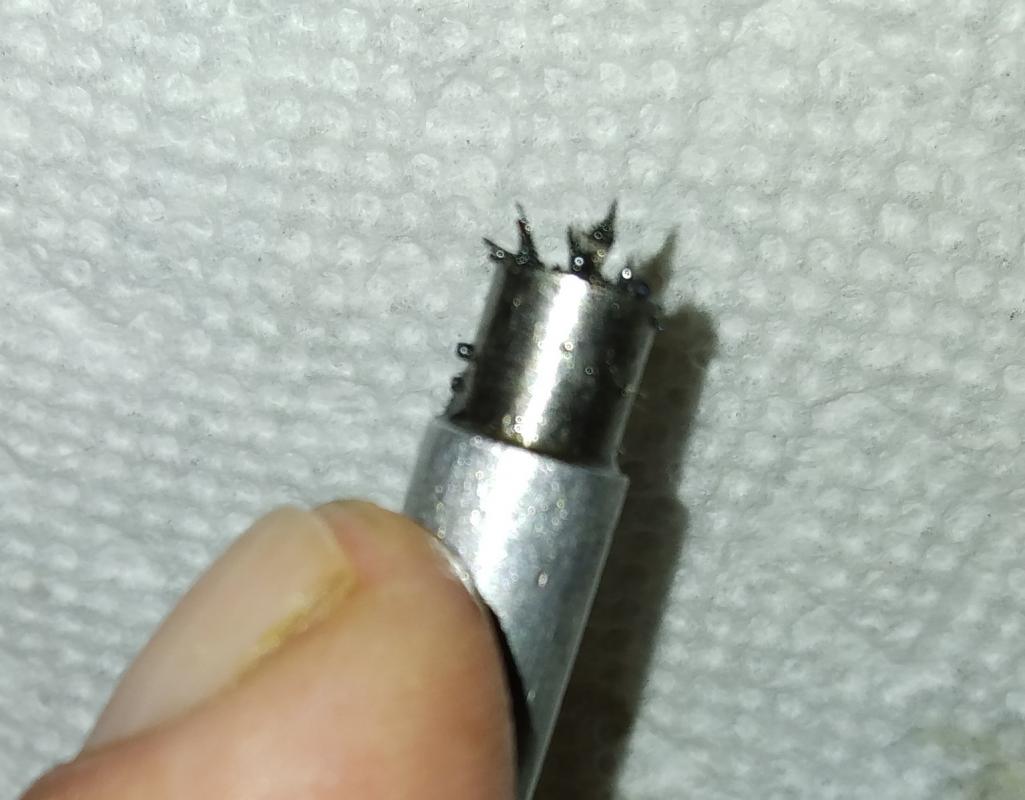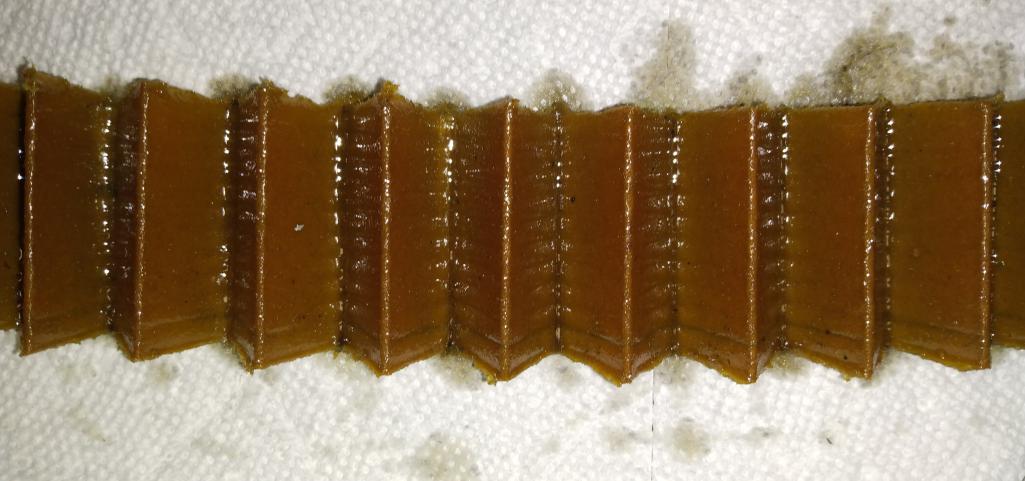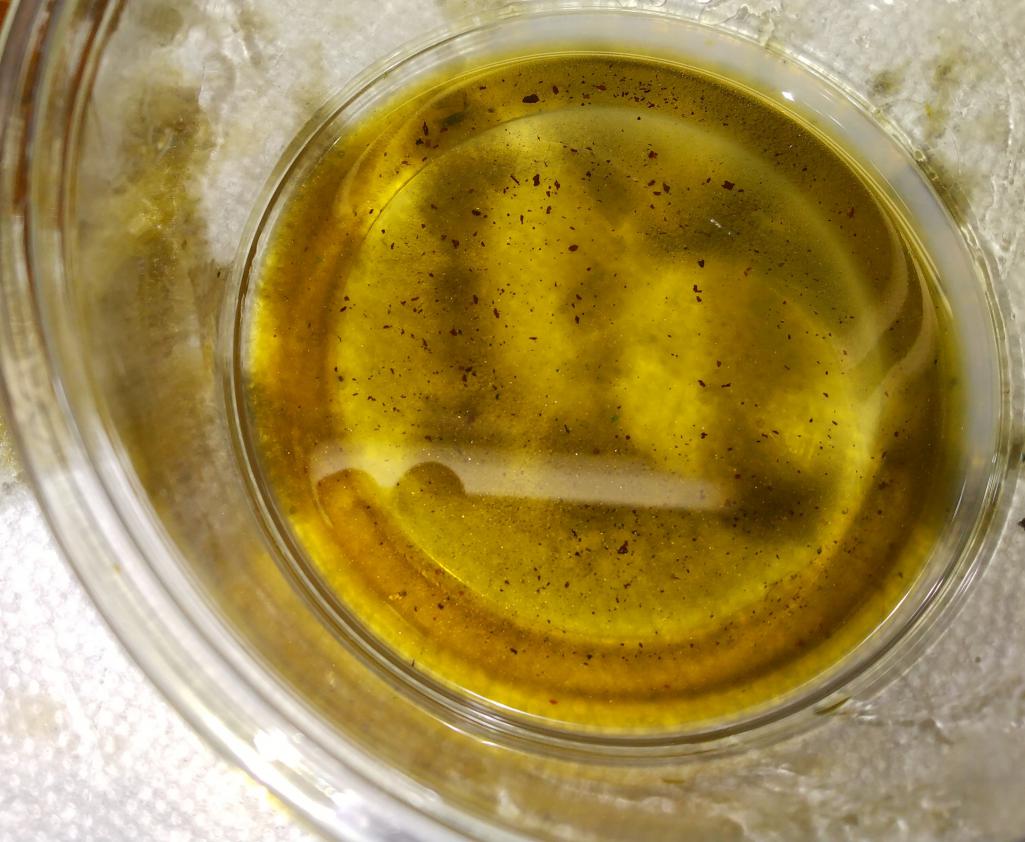|
|

|
Porsche, and the Porsche crest are registered trademarks of Dr. Ing. h.c. F. Porsche AG.
This site is not affiliated with Porsche in any way. Its only purpose is to provide an online forum for car enthusiasts. All other trademarks are property of their respective owners. |
|
|
  |
| Geezer914 |
 Sep 15 2021, 05:04 PM Sep 15 2021, 05:04 PM
Post
#1
|
|
Geezer914     Group: Members Posts: 2,166 Joined: 18-March 09 From: Salem, NJ Member No.: 10,179 Region Association: North East States 
|
I just built a 2056 and had a number of no start issues, I finally got the engine to start. but it looks like I wiped out the cam. So I have to start over with a complete tear down and cleaning of the block and the internals. (IMG:style_emoticons/default/headbang.gif)
My question is with determining push rod length: Are you measuring the length of each push rod, or measuring the #1 intake and exhaust and cutting all the intake and all the exhaust push rods the same length? With turning the engine over and over by hand to get the correct push rod lengths you would assume it has wiped all the assembly lube off the cam lobes before you start the engine. (IMG:style_emoticons/default/WTF.gif) I sure as hell don't want this to happen again. |
| adolimpio |
 Sep 15 2021, 05:14 PM Sep 15 2021, 05:14 PM
Post
#2
|
|
Art   Group: Members Posts: 183 Joined: 10-March 10 From: Greenwood SC Member No.: 11,449 Region Association: South East States 
|
I determined the length of intake and exhaust on one cylinder and cut all according to this
What makes you think you wiped out the cam? |
| Geezer914 |
 Sep 15 2021, 06:25 PM Sep 15 2021, 06:25 PM
Post
#3
|
|
Geezer914     Group: Members Posts: 2,166 Joined: 18-March 09 From: Salem, NJ Member No.: 10,179 Region Association: North East States 
|
It started out at 80lbs oil pressure and went down to 20 after 20 minutes. I am going to take the oil filter apart and check for debris.
|
| iankarr |
 Sep 15 2021, 08:33 PM Sep 15 2021, 08:33 PM
Post
#4
|
|
The wrencher formerly known as Cuddy_K     Group: Members Posts: 2,582 Joined: 22-May 15 From: Heber City, UT Member No.: 18,749 Region Association: Intermountain Region 
|
That’s to be expected. As the oil heats up the pressure goes down. The rule of thumb is 10psi per 1K rpm, warm. If you were breaking in the cam at 2K, 20psi is within the range of normal.
How did it run? Btw I just built a 2056 you can see videos about it (and valve geometry) in my signature |
| Robarabian |
 Sep 15 2021, 08:44 PM Sep 15 2021, 08:44 PM
Post
#5
|
|
914 A Roo    Group: Members Posts: 733 Joined: 11-February 19 From: Simi Valley, Kalifornia Member No.: 22,865 Region Association: Southern California 
|
Somebody chime in here... if memory serves correct, if you fried the cam, you would have no combustion / compression would be effected, ie., you would have no valve lift in intake or exhaust or both.
The oil pressure is driven by the pump with that groove in the camshaft end, through the galleys and bearing spaces. Unless you didn't use enough assembly lube, those surfaces wont just fry...unless the oil pump wasn't pumping or the machine work was really bad and the tolerances were too large to begin with. It may have had high pressure at start up as everything is still cold and thick and the larger bearing tolerances were pressurized with the thick oil. Ian is correct, the pressure will come down as it heats up. If you turn the key and it ignights, runs, revs etc, then it is not a fried camshaft. Unless you have 5-8 psi at idle and the oil light is on because of low idle pressure, I would look elsewhere versus the cam lobes. A quick compression test will answer that question. 10 PSI at idle would be okay on a warm engine, despite wanting more, it wouldn't kill anything for sure. Oil pump failure, weight of oil, bearing tolerance... those should be your search starts in my opinion. Anyone else? I determined the length of intake and exhaust on one cylinder and cut all according to this What makes you think you wiped out the cam? |
| Tdskip |
 Sep 16 2021, 05:56 AM Sep 16 2021, 05:56 AM
Post
#6
|
|
Advanced Member     Group: Members Posts: 3,748 Joined: 1-December 17 From: soCal Member No.: 21,666 Region Association: None 
|
|
| Shivers |
 Sep 16 2021, 07:37 AM Sep 16 2021, 07:37 AM
Post
#7
|
|
Senior Member     Group: Members Posts: 3,215 Joined: 19-October 20 From: La Quinta, CA Member No.: 24,781 Region Association: Southern California |
Is that what made you think the cam was trashed, oil pressure dropped? Or was it making terrible noises, vibration, not running at all? Metal on the dipstick, any signs?
|
| Geezer914 |
 Sep 16 2021, 07:40 AM Sep 16 2021, 07:40 AM
Post
#8
|
|
Geezer914     Group: Members Posts: 2,166 Joined: 18-March 09 From: Salem, NJ Member No.: 10,179 Region Association: North East States 
|
Drained the oil and cut open the oil filter . There were a few shards of metal stuck to the magnet after dragging it over the bottom of the plastic drain pan. No debris in the bottom of the oil filter and the paper element was clean. The black specs in the cup is from the bottom of the drain pan. and are non metallic Opinions?
   |
| Shivers |
 Sep 16 2021, 08:02 AM Sep 16 2021, 08:02 AM
Post
#9
|
|
Senior Member     Group: Members Posts: 3,215 Joined: 19-October 20 From: La Quinta, CA Member No.: 24,781 Region Association: Southern California |
You are going to have during break in, lots of metal parts wearing in to other metal parts and non-metal parts. With the metal being on a magnet, it is hard to tell if it is small pieces stacked or a few big pieces. I've always had a little metal after break in. That is why you use a break in oil and change it soon after break in.
|
| VaccaRabite |
 Sep 16 2021, 11:59 AM Sep 16 2021, 11:59 AM
Post
#10
|
|
En Garde!           Group: Admin Posts: 13,829 Joined: 15-December 03 From: Dallastown, PA Member No.: 1,435 Region Association: MidAtlantic Region 
|
Stop worrying.
You are doing CAM break in. As long as you used a good assembly lube and kept the RPMS up during break in you are fine. Often people with grind the sharp edges of the cam before install to minimize what you are seeing. If your pushrod geo is off, you don't make as much power and the engine may not last as long, but you would have to really mess it up to kill the motor or the cam during break in. Go seat the rings and see how it does. Zach |
| Geezer914 |
 Sep 16 2021, 02:10 PM Sep 16 2021, 02:10 PM
Post
#11
|
|
Geezer914     Group: Members Posts: 2,166 Joined: 18-March 09 From: Salem, NJ Member No.: 10,179 Region Association: North East States 
|
Thanks for the confidence boost.
|
| jcd914 |
 Sep 16 2021, 11:58 PM Sep 16 2021, 11:58 PM
Post
#12
|
|
Advanced Member     Group: Members Posts: 2,096 Joined: 7-February 08 From: Sacramento, CA Member No.: 8,684 Region Association: Northern California |
Cam break-in does not have any real effect on the performance of the engine in the first few hundred miles.
If you wiped out your cam during break-in you would not likely know it. Poor performance from a fresh engine is not going to be caused by your cam break-in process. Many years ago I destroyed a cam during break-in and I did not discover it until the engine had 150 miles and a valve spring broke. This was a 78 Bus engine I was building for my self but I used complete assembled aftermarket heads, too long ago to know who's. I did not disassemble and inspect the heads as I should have (and would today), I just looked them over and they appeared OK. Young dealership mechanic expects part to be right and work right, what a fool! This was a hydraulic lifter motor and on start up the lifters rattled until oil press built up and everything else seemed normal. I had just gone past 150 mile, which was my planned oil change but I had not gotten there yet. One morning I started it up and there was a valve clatter, I thought a lifter bled off and would pump up but it didn't. So when I drained the oil I found a bunch of silver metal flake in the oil and when I popped the valve covers off I found the broken valve spring on the driver side head. After complete tear down I found that the cam and lifters were worn severely, all lifters cupped and cam lobes visibly worn and rough. Ultimately I trace this to the passenger side cylinder head had thicker valve spring wire diameter and the height the spring keeper sat at on the valve. Together this meant the springs would coil bind and the valve could open no more before the cam and lifters had reached full lift. During assemble I did not have issue because the hydraulic lifters stay collapsed until oil pressure fills them up. So as soon as the lifters pumped up and tried to reach full lift, the extreme pressure on the cam nose destroyed the cam and lifters as well as the rockers and rocker shafts on the passenger head. During the 150 miles I drove the bus it ran well, I only tore it down because the valve spring on the drivers head broke, not because I had a running issue or my cam did not survive break-in. If the cam wear caused any performance lose it was not noticeable. My point I guess is, that my cam and lifter were worn well beyond what a poor break-in would cause and the engine still ran well. It was not going to last, the metal was everywhere. I never found a cause for the valve spring on the driver side head to break but it probably save the rest of the engine. The supplier of the cylinder heads provided a new set of heads, lifters, rings, bearings and Elgin's provided another cam, ground to the same profile and at a discount even though they had no part in the failure. I disassembled and inspected the new heads and reassembled with new OE springs. Jim |
  |
1 User(s) are reading this topic (1 Guests and 0 Anonymous Users)
0 Members:

|
Lo-Fi Version | Time is now: 29th December 2025 - 05:04 AM |
Invision Power Board
v9.1.4 © 2025 IPS, Inc.








